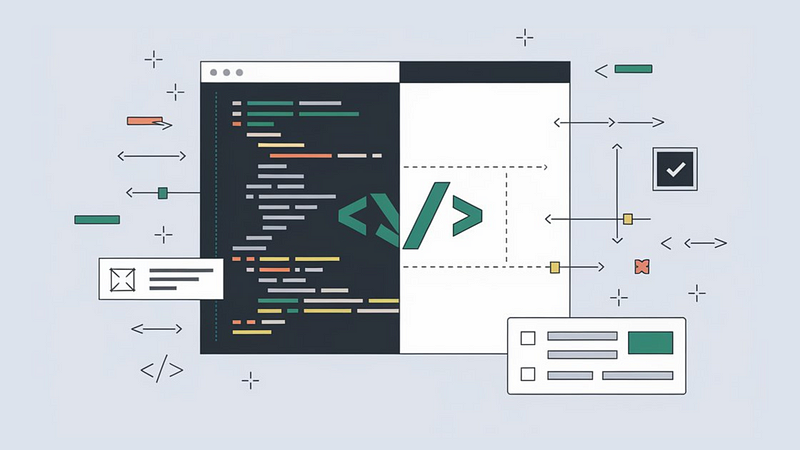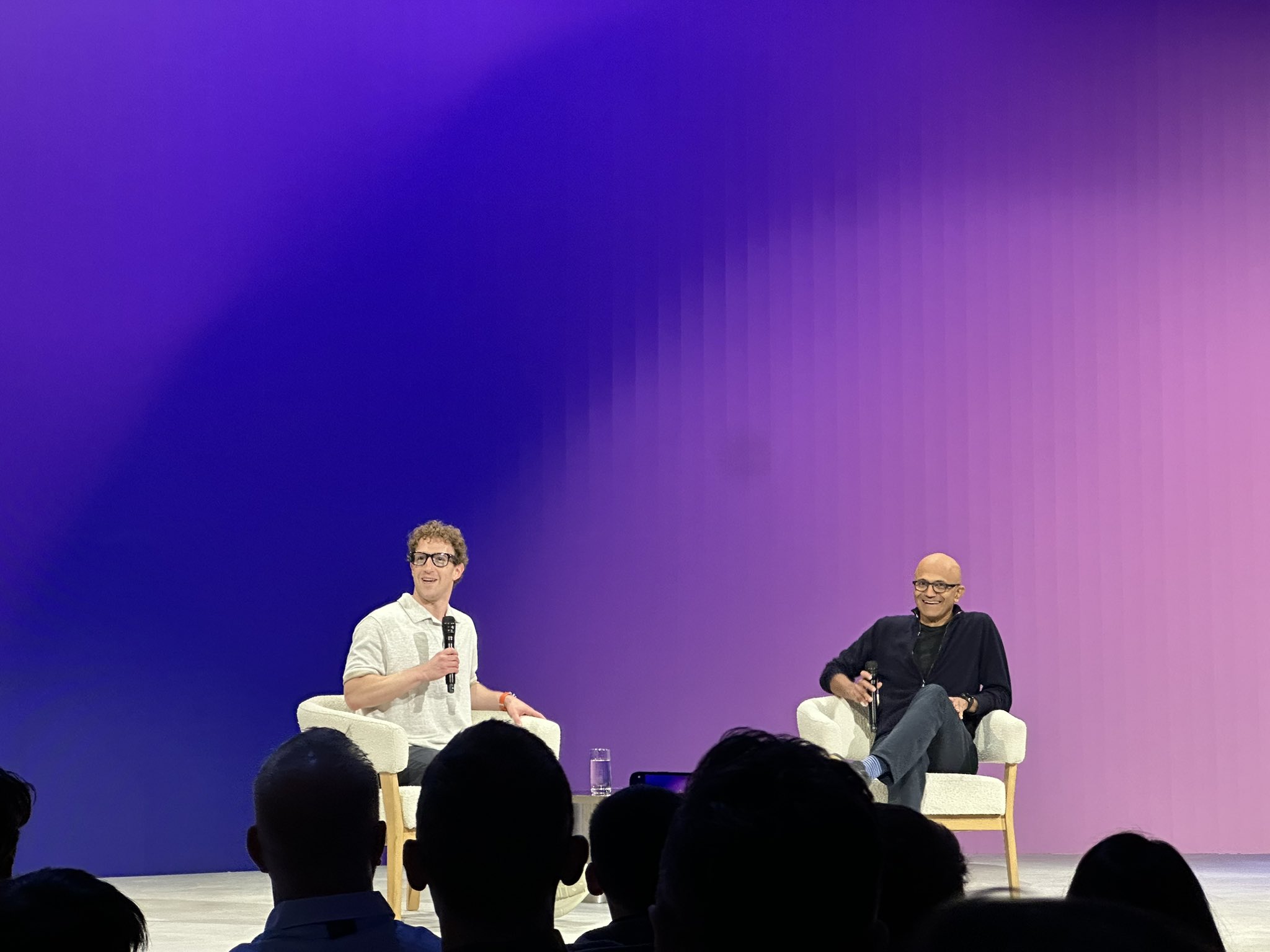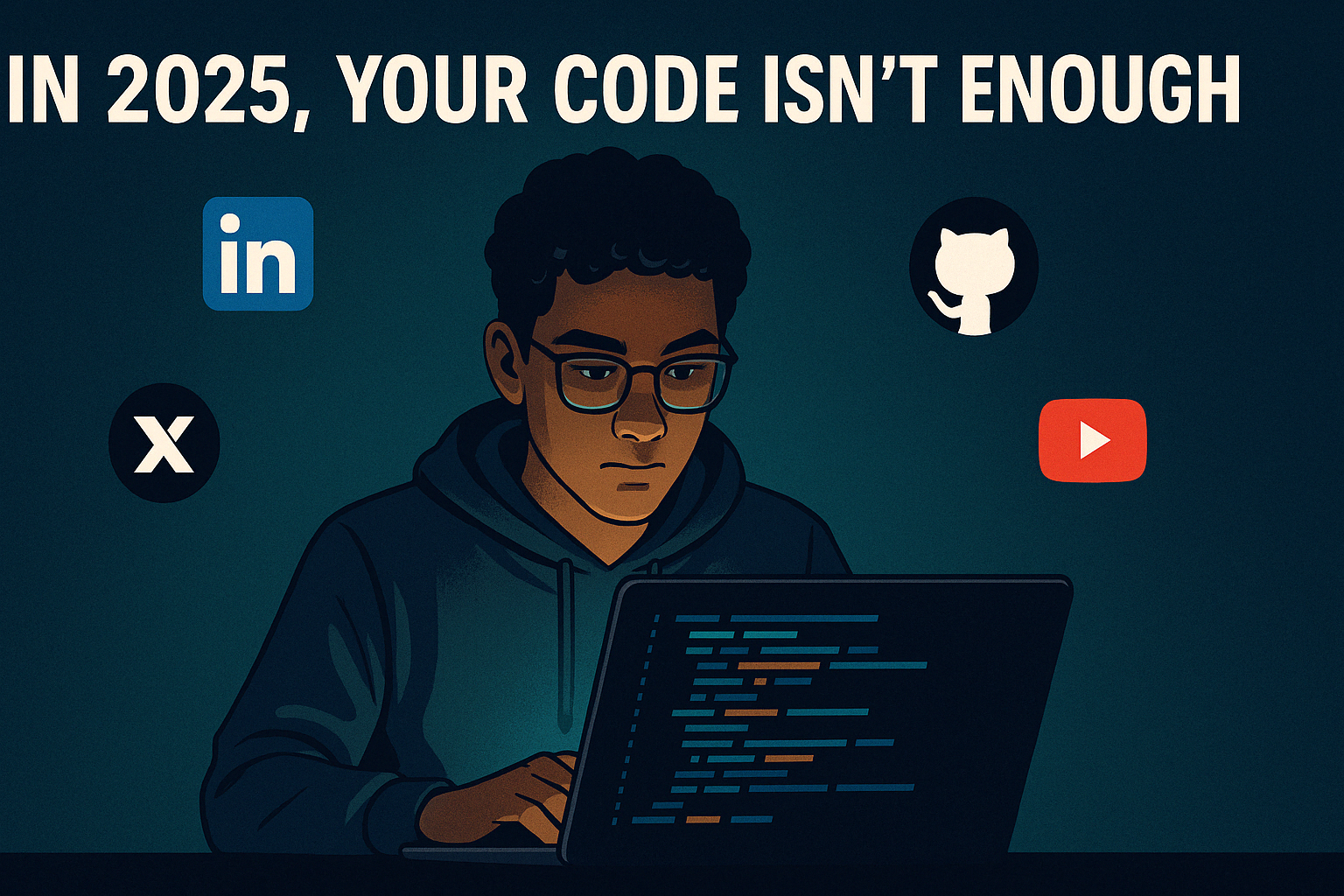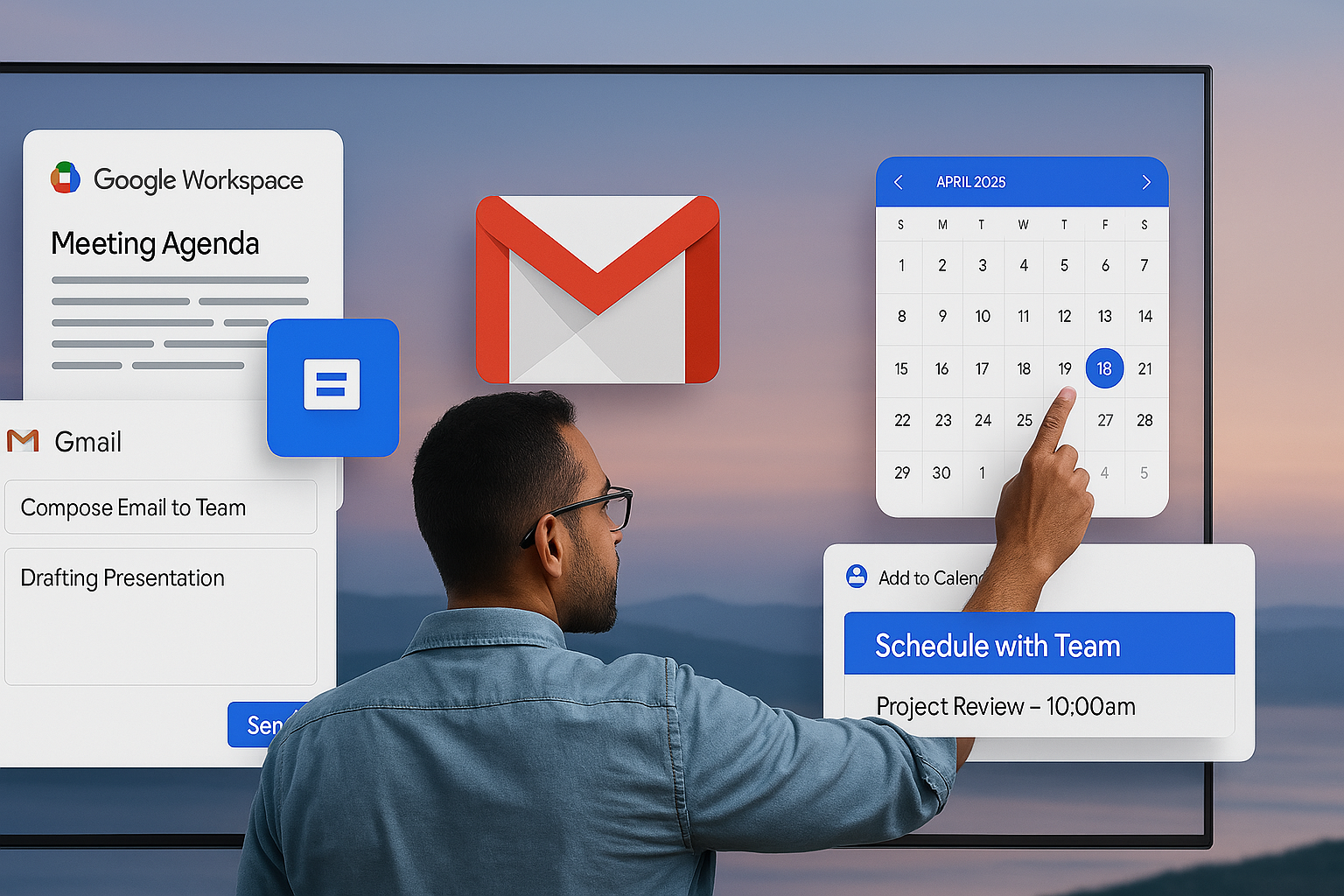Citizen Developers: How Anyone Can Build Software Without Coding
Citizen Developers: How Anyone Can Build Software Without Coding
Imagine having the ability to develop apps and software without ever having to write a line of code. Sounds like science fiction? Not anymore. The times have changed and so have the barriers that previously discouraged individuals from non-technical backgrounds to develop digital solutions. Thanks to the rapidly advancing technology and user-friendly automation, non-techies have significantly eased the burden of IT employee shortages.

Who are Citizen Developers?
A citizen developer builds applications using no-code or low-code platforms instead of traditional programming languages like Python, Java, or C++. They are typically professionals from non-technical backgrounds — such as marketing, HR, finance, or operations — who use visual, drag-and-drop tools to develop applications tailored to their needs. Citizen development empowers non-programmers to build applications quickly and affordably by enabling people within the organization to build applications using simple visual interfaces. Some common examples of citizen developers include:
Entrepreneurs creating their MVPs (minimum viable products) and customer relationship management (CRM) systems without hiring a software development team.
Small business owners to create applications for inventory tracking and employee scheduling.
Marketing professionals developing personalized landing pages, chatbots, and automated email sequences.
HR teams streamlining employee onboarding, feedback systems, and leave management tools.
Operations managers integrating different software tools to improve internal workflows.
What is No-Code and Low-Code?
No-code is an approach that does not require any programming experience. Users can develop applications using intuitive graphical drag-and-drop interfaces, pre-existing templates, and visual automation.
Low-code is a method of designing and developing applications using minimal coding with the help of easy-to-work graphical interfaces, and embedded functionalities, allowing more room for flexibility and customization. These platforms are a better fit for developers and non-developers who may need to customize functionality beyond what is possible in a no-code platform.
To better understand these methods, we recommend watching this YouTube video which provides an interesting breakdown of no-code and low-code development:
Empowering Citizen Developers through AI Technologies
Artificial Intelligence (AI) has emerged as an enabling force behind citizen developers, individuals who create applications and automate processes without formal programming abilities. This is what AI technologies are doing to mold the development platform for non-professional developers:
- Natural Language Processing (NLP) Integration: Natural language processing (NLP) assists developers in creating apps that can comprehend human language. This makes user interactions more intuitive, natural, and simple. Tools such as Dialogflow (by Google) allow developers to add voice or text-based interfaces to apps without needing to be NLP experts. NL prompts enable users to give instructions or define the functionality they want for an application using natural language, which the AI system then successfully converts into code or application elements. NLP is crucial as it deals with volumes of data, providing enlightening information that enables citizen developers to make informed decisions when designing the application. Additionally, sophisticated NLP algorithms can easily create code snippets or entire functions from natural language descriptions, greatly reducing the need for technical coding expertise.
- Simplified App Development: AI-driven low-code/no-code platforms allow citizen developers to develop sophisticated applications with the help of easy-to-use visual interfaces. AI supports by automating the backend, providing code suggestions, and optimizing the user experience with minimal human intervention. AI powers platforms such as Microsoft PowerApps or Appian to simplify app development, bringing it within the reach of people who don’t have a coding background.
- Increased Efficiency and Productivity: Artificial intelligence automates repetitive tasks, thus conserving time and reducing errors. Additionally, it supports the debugging process by offering real-time code suggestions together with the identification of potential errors. Tools like GitHub Copilot assist in coding and enable beginner programmers to code faster.
How To Get Started?
Getting started with citizen development is way simpler than you think. Ready to dive into the world of citizen development? Here’s a step-by-step guide to get you started:
- Identify Your Needs: Identify what you want to solve. Do you want to automate repetitive tasks, build an internal workflow, or develop a customer-facing application?
- Select the Right Platform: Research and choose from a no-code or low-code platform as per your needs. For No-Code: Utilize platforms like Bubble (web application), Glide (mobile application), or Zapier (automation).
For Low-Code: Utilize OutSystems, Mendix, or Microsoft Power Apps if you require a bit of coding flexibility. - Learn the Basics: Most no-code platforms provide tutorials, community forums, and learning resources. Take some time to understand their features and test them with simple projects.
- Start Small: Start with a small, simple project like Automating email responses using Zapier, Building a simple inventory tracker using Airtable, or Creating a simple website using Wix or Webflow. This exposes you to the tools before working on complex projects.
- Experiment and Iterate: Citizen development is all about experimenting and optimizing. Experiment with various workflows, features, and integrations to enhance your application. Engage with online forums, forums, and user groups where citizen developers share tips, advice, and solutions.
- Work with IT Teams: Once comfortable, build more complex applications, integrate multiple tools, and work with IT teams for security and compliance.
By following these steps, anyone — from business users to entrepreneurs — can use no-code and low-code platforms to develop solutions efficiently and independently.
The Ultimate Toolset Behind the Citizen Developer Movement
The rapid growth of low-code and no-code platforms is a major contributor to citizen development. These platforms have an easy-to-use interface that allows users to develop applications using drag-and-drop elements, pre-designed templates, and automated workflows. A few of the most popular tools include:
Low-Code Platforms-
- OutSystems: A high-performance low-code development platform that uses visual programming to streamline the development process.
- Mendix: A cloud-native, full-stack platform that offers a collaborative development environment for rapid application delivery.
- Microsoft Power Apps: A suite of Microsoft apps that allows users to create customized apps as per their business requirements.
No-Code Platforms-
- Bubble: A comprehensive visual-programming no-code platform for building complex software with ease.
- Airtable: A database-oriented platform that allows the simplicity of spreadsheets for creating rational databases plus app-building abilities.
- Webflow: Webflow provides software-as-a-service for building, hosting, and managing a website.
Workflow Automation Tools-
- Zapier: A platform that allows you to merge various apps to automate workflows without programming.
- Integromat (now Make): Make offers powerful automation features with a visual interface.
- IFTTT (If This Then That): It is a no-code automation tool that simplifies the creation of conditional workflows for everyday tasks.
App Builders-
- AppSheet: Google’s no-code app development platform for displaying and sharing project data.
- Thunkable: A drag-and-drop platform that enables users to design, develop, and deploy native mobile apps.
- Adalo: Adalo allows the development of custom mobile and web applications without code, simplifying the process.
Content Management Systems (CMS)-
- WordPress: The most widely used CMS, with numerous plugins and flexible design themes.
- Wix: Offers an intuitive website builder that allows you to create, manage, and design your website with a wide range of templates.
- Squarespace: A website building and hosting platform known for its aesthetics and simplicity.
Database Management Tools-
- Google Sheets: A general-purpose spreadsheet tool for data management and collaboration.
- Notion: Notion offers a mix of note-taking, task management, and database features.
- Airtable: Provides a hybrid tool with spreadsheet and database capabilities.
Design and Prototyping Tools-
- Figma: A collaborative design platform for designing user interfaces and prototypes.
- Sketch: Famous for its vector-based design features and plugins, Sketch is a toolkit specifically made for designers.
- Adobe XD: A one-stop tool for designing and prototyping digital experiences.
Learning Resources-
- Udemy: It offers a broad curriculum for no-code and low-code development for non-developers.
- Coursera: Coursera provides specialized courses from top universities and institutions ranging from teaching the basics of low-code and no-code to advanced knowledge.
- YouTube: A platform full of tutorials and guides for aspiring citizen developers to watch and master.
Community and Support-
- Indie Hackers: A community of entrepreneurs, sharing tips and experiences about various topics including citizen development.
- Makerpad: Makerpad specializes in no-code and automation tools, with tutorials and a support community.
- No-Code Founders: Brings together no-code enthusiasts and offers resources for developing without code.
These tools empower businesses to automate processes and create autonomous apps that adapt to new situations without specific instructions.
Citizen Developers vs. IT Pros: Who Should Really Be Building Business Apps?
Since professional developers have spent years honing the talent and expertise of programming, the sudden wave towards citizen development has created a lot of skepticism in the minds of people. This gives rise to the question- If we have traditional developers why do we need citizen developers?
Since the demand for business application services is at the rise, software developers have a lot on their plate. These developers are already handling infrastructure, security, and maintenance, and often find themselves buried under huge volumes of requests for app and software development. This is where citizen developers step in and take up the tasks of app development, which frees up the IT professionals and they can now focus on high-code projects, thus fostering innovation and unlocking efficiency. Additionally, since the non-IT employees are the end consumers of the apps/ software, they can design the applications tailored to their business requirements and workflow. According to Salesforce’s Top Trends in Low-Code Development report, 63% of IT leaders believe that low-code solutions will shorten software development timelines, which will help organizations respond to market changes in real-time and maintain a competitive edge by improvising continuously.
So, does that mean traditional developers can be replaced?
The short answer is no. While citizen developers and IT teams can complement each other and improve efficiency in the workplace, professional tasks like enterprise-grade applications, large-scale infrastructure, and highly specialized software still require professional experience, which citizen developers might not be able to comprehend.
Instead of replacing traditional software development, citizen development together with traditional software development has the potential to automate tasks and innovate much faster while matching up with the effectiveness of professionally built software.
The Future of Citizen Development
Citizen Development is predicted to contribute significantly to organizations, majorly due to the surging low-code/no-code platforms. According to Gartner, by the year 2026, citizen developers creating software and applications using low/no-code platforms might outnumber traditional developers in large organizations, and over 15% of new applications will be generated by AI automatically, without any human intervention. Additionally, the trend of Citizen Development is likely to boost particularly in small and medium enterprises, who can allocate limited funds. Instead of hiring professionals, they can make use of low-code and no-code platforms and get their work done at a fraction of the cost. Future no-code platforms are anticipated to incorporate improved security capabilities to tackle issues related to data safeguarding, privacy, and regulatory compliance. These capabilities might feature integrated encryption and multi-factor authentication, that will enable organizations to use no-code tools with increased assurance and enhanced security. It is predicted that the low-cost/ no-cost platforms will expand beyond existing features and add advanced features like predictive analytics, machine learning integration, and customizable API connections so that companies incorporating citizen development can compete effectively with their rivals relying on traditional programming methods.
The Citizen Developer Revolution: Are You Ready?
The tech industry is experiencing a transformation where software development is within reach for everyone — not just those with programming skills. With the rise of no-code and low-code platforms, anyone can create applications, automate tasks, and turn digital concepts into reality — without having to write a single line of code. The future of app development is no longer solely in the hands of software engineers. It now belongs to problem-solvers, innovators, and everyday professionals who are using technology in ways we never thought possible.
So, are you ready to step into the role of a citizen developer? The tools are readily available — it’s time to start creating!
Ready to build your tech dream team?
Check out MyNextDeveloper, a platform where you can find the top 3% of software engineers who are deeply passionate about innovation. Our on-demand, dedicated, and thorough software talent solutions are available to offer you a complete solution for all your software requirements.
Visit our website to explore how we can assist you in assembling your perfect team.





